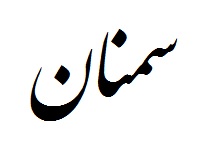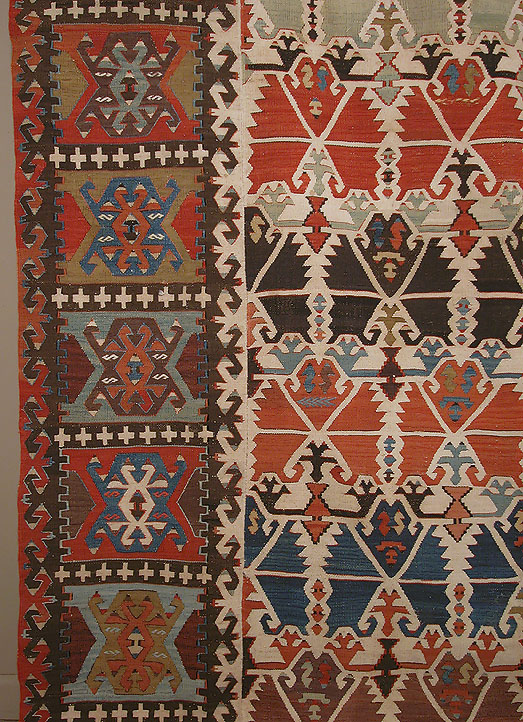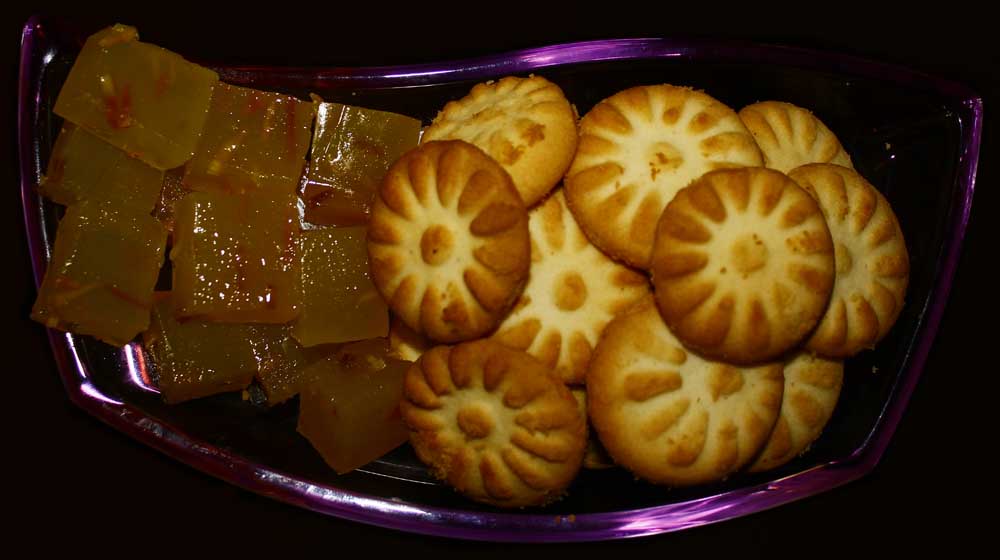|
Semnan (city)
Semnan (; ) is a city in the Central District (Semnan County), Central District of Semnan County, Semnan province, Semnan province, Iran, serving as capital of the province, the county and the district. The city is on the alluvial fan of the Golrudbar creek in the north-central part of the country, 216 km east of Tehran and 640 km west of Mashhad. With a population of 185,129 people in 2016, Semnan is the hub of the Semnani languages, Semnani language, a sub-branch of the Iranian languages spoken to the north. It is home to the Semnani people, Semnani ethnic group. Semnan offers various recreational activities; historical and religious sites; festivals, gardens and parks; and centers of higher education and Semnani culture. The city is the cultural and political capital of Semnan province. The city's main souvenirs are Narcissus (plant), daffodil flowers, Sheermal, Shirmal pastry, Kolüçe cookies, kilim rugs, and shortbread. Etymology There are several theories w ... [...More Info...] [...Related Items...] OR: [Wikipedia] [Google] [Baidu] |
Iran
Iran, officially the Islamic Republic of Iran (IRI) and also known as Persia, is a country in West Asia. It borders Iraq to the west, Turkey, Azerbaijan, and Armenia to the northwest, the Caspian Sea to the north, Turkmenistan to the northeast, Afghanistan to the east, Pakistan to the southeast, and the Gulf of Oman and the Persian Gulf to the south. With a Ethnicities in Iran, multi-ethnic population of over 92 million in an area of , Iran ranks 17th globally in both List of countries and dependencies by area, geographic size and List of countries and dependencies by population, population. It is the List of Asian countries by area, sixth-largest country entirely in Asia and one of the world's List of mountains in Iran, most mountainous countries. Officially an Islamic republic, Iran is divided into Regions of Iran, five regions with Provinces of Iran, 31 provinces. Tehran is the nation's Capital city, capital, List of cities in Iran by province, largest city and financial ... [...More Info...] [...Related Items...] OR: [Wikipedia] [Google] [Baidu] |
Mashhad
Mashhad ( ; ), historically also known as Mashad, Meshhed, or Meshed in English, is the List of Iranian cities by population, second-most-populous city in Iran, located in the relatively remote north-east of the country about from Tehran. In the Central District (Mashhad County), Central District of Mashhad County, it serves as the capital of Razavi Khorasan province, Razavi Khorasan province, the county, and the district. It has a population of about 3,400,000 (2016 census), which includes the areas of Mashhad Taman and Torqabeh. The city was governed by different ethnic groups over the course of its history. Mashhad was previously a small village, which by the 9th century had been known as Sanabad (Mashhad), Sanabad, and which was located—along with Tus, Iran, Tus and other villages—on the ancient Silk Road connecting them with Merv to the east. Mashhad would eventually outgrow all its surrounding villages. It gained its current name meaning "place of martyrdom" in r ... [...More Info...] [...Related Items...] OR: [Wikipedia] [Google] [Baidu] |
Noah
Noah (; , also Noach) appears as the last of the Antediluvian Patriarchs (Bible), patriarchs in the traditions of Abrahamic religions. His story appears in the Hebrew Bible (Book of Genesis, chapters 5–9), the Quran and Baháʼí literature, Baha'i writings, and extra-canonical, extracanonically. The Genesis flood narrative is among the best-known stories of the Bible. In this account, God "regrets" making mankind because they filled the world with evil. Noah then labors faithfully to build the Noah's Ark, Ark at God's command, ultimately saving not only his own family, but mankind itself and all land animals, from extinction during the Great Flood, Flood. Afterwards, God makes a Covenant (biblical), covenant with Noah and promises never again to destroy the earth with a flood. Noah is also portrayed as a "tiller of the soil" who is the first to cultivate the vine. After the flood, God commands Noah and his sons to "be fruitful, and multiply, and replenish the earth." The sto ... [...More Info...] [...Related Items...] OR: [Wikipedia] [Google] [Baidu] |
Iranian Peoples
Iranian peoples, or Iranic peoples, are the collective ethnolinguistic groups who are identified chiefly by their native usage of any of the Iranian languages, which are a branch of the Indo-Iranian languages within the Indo-European languages, Indo-European language family. The Proto-Iranian language, Proto-Iranians are believed to have emerged as a separate branch of the Indo-Iranians in Central Asia around the mid-2nd millennium BC. At their peak of expansion in the mid-1st millennium BC, the territory of the Iranian peoples stretched across the entire Eurasian Steppe; from the Danube, Danubian Plains in the west to the Ordos Plateau in the east and the Iranian Plateau in the south.: "From the first millennium b.c., we have abundant historical, archaeological and linguistic sources for the location of the territory inhabited by the Iranian peoples. In this period the territory of the northern Iranians, they being equestrian nomads, extended over the whole zone of the ste ... [...More Info...] [...Related Items...] OR: [Wikipedia] [Google] [Baidu] |
Scythians
The Scythians ( or ) or Scyths (, but note Scytho- () in composition) and sometimes also referred to as the Pontic Scythians, were an Ancient Iranian peoples, ancient Eastern Iranian languages, Eastern Iranian peoples, Iranian Eurasian nomads, equestrian nomadic people who had migrated during the 9th to 8th centuries BC from Central Asia to the Pontic Steppe in modern-day Ukraine and Southern Russia, where they remained established from the 7th century BC until the 3rd century BC. Skilled in Horses in warfare, mounted warfare, the Scythians replaced the Agathyrsi and the Cimmerians as the dominant power on the western Eurasian Steppe in the 8th century BC. In the 7th century BC, the Scythians crossed the Caucasus Mountains and frequently raided West Asia along with the Cimmerians. After being expelled from West Asia by the Medes, the Scythians retreated back into the Pontic Steppe in the 6th century BC, and were later conquered by the Sarmatians in the 3rd to 2nd centuries ... [...More Info...] [...Related Items...] OR: [Wikipedia] [Google] [Baidu] |
Zoroastrian
Zoroastrianism ( ), also called Mazdayasnā () or Beh-dīn (), is an Iranian religion centred on the Avesta and the teachings of Zarathushtra Spitama, who is more commonly referred to by the Greek translation, Zoroaster ( ). Among the world's oldest organized faiths, its adherents exalt an uncreated, benevolent, and all-wise deity known as Ahura Mazda (), who is hailed as the supreme being of the universe. Opposed to Ahura Mazda is Angra Mainyu (), who is personified as a destructive spirit and the adversary of all things that are good. As such, the Zoroastrian religion combines a dualistic cosmology of good and evil with an eschatological outlook predicting the ultimate triumph of Ahura Mazda over evil. Opinions vary among scholars as to whether Zoroastrianism is monotheistic, polytheistic, henotheistic, or a combination of all three. Zoroastrianism shaped Iranian culture and history, while scholars differ on whether it significantly influenced ancient Western ... [...More Info...] [...Related Items...] OR: [Wikipedia] [Google] [Baidu] |
Semnan Calligraphy Font
Semnan may refer to: * Semnan province, a province in Iran * Semnan County, a county in the Semnan Province of Iran * Semnan, Iran, a city in the Semnan County of Iran See also * Semnani (other) * {{place name disambiguation ... [...More Info...] [...Related Items...] OR: [Wikipedia] [Google] [Baidu] |
Shortbread
Shortbread or shortie is a traditional Scottish biscuit usually made from one part sugar, white sugar, two parts butter and three to four parts plain flour, plain wheat flour. Shortbread does not contain leavening, such as baking powder or baking soda. Shortbread is widely associated with Christmas and Hogmanay festivities in Scotland, and some Scottish brands are exported around the world. History Shortbread originated in Scotland. Although it was prepared during much of the 12th century, and probably benefited from cultural exchange with French pastry chefs during the Auld Alliance between France and Scotland, the refinement of shortbread is popularly credited to Mary, Queen of Scots in the 16th century. Despite the enduring popular association, evidence for any connection between Mary and shortbread's origin is sparse.Emma Kay, ''A History of British Baking: From Blood Bread to Bake-Off'' (Pen & Sword, 2020) pp. 113–114. "Despite the endless citations linking Mary Queen o ... [...More Info...] [...Related Items...] OR: [Wikipedia] [Google] [Baidu] |
Kilim
A kilim ( ; ; ) is a flat tapestry-weaving, woven carpet or rug traditionally produced in countries of the former Persian Empire, including Iran and Turkey, but also in the Balkans and the Turkic countries. Kilims can be purely decorative or can function as prayer rugs. Modern kilims are popular floor coverings in Western households. Etymology The word 'kilim' originates from the Persian language, Persian () where it means 'to spread roughly', perhaps of Akkadian language, Akkadian or Aramaic, Aramean origin. History Like Pile weave, pile carpets, kilim have been produced since ancient times. The explorer Aurel Stein, Mark Aurel Stein found kilims dating to at least the fourth or fifth century CE in Hotan, China: :"As kilims are much less durable than rugs that have a pile to protect the warp and weft, it is not surprising that few of great age remain.... The Weaving, weave is almost identical with that of modern kilims, and has about fourteen threads of warp and sixt ... [...More Info...] [...Related Items...] OR: [Wikipedia] [Google] [Baidu] |
Kolüçe
Koloocheh or kleicha ( Persian: کلوچه), also known as Persian New Year bread, is a Persian stamped cookie or bread, originating in various parts of Iran. There are many variations on the recipe (bready texture vs. crispy; stuffed vs. unstuffed) made in Iran and in Persian diaspora communities, including in Eastern Europe and North America. About Typically, koloocheh are cookies filled with dates and walnuts, but they can be stuffed with grated coconut and additionally spiced with saffron, rose water, cardamom, cinnamon, or citrus zest. Caspian cuisine-style bready koloocheh cookies can be made vegan by replacing butter with coconut oil. It is a recipe made by Persian Jews during the holiday Purim; by Christians during Easter; and Muslims during Ramadan. For Norooz (English: Persian New Year), Iranians will make a koloocheh bread. Koloocheh cookies from Southern Iran are brittle biscuits that principally consist of water, sugar, wheat flour and egg white. File:Fresh Coo ... [...More Info...] [...Related Items...] OR: [Wikipedia] [Google] [Baidu] |
Sheermal
Sheermal ( Persian/Urdu: , ,:, also spelled shirmal, is a saffron-flavored traditional flatbread eaten in Iran and the Indian subcontinent. The word sheermal is derived from the Persian words شیر ( translit. sheer, Sanskrit Kshir) meaning milk, and مالیدن ( translit. malidan) meaning to rub or to knead. In a literal translation, sheermal means milk-rubbed. It was introduced to North India by the Mughal emperors during the medieval period. It became a delicacy of Lucknow, Hyderabad and Aurangabad. It is also part of the Awadhi cuisine and is enjoyed in Bhopal and Pakistan. Preparation Shirmal is a mildly sweet naan made out of maida, leavened with yeast and baked in a tandoor or oven. Shirmal was traditionally made like roti. Today, shirmal is prepared like naan. The warm water in the recipe for naan roti was replaced with warm milk sweetened with sugar and flavored with saffron and cardamom. In Iran, there are slight regional variations in the preparation of sheerma ... [...More Info...] [...Related Items...] OR: [Wikipedia] [Google] [Baidu] |
Narcissus (plant)
''Narcissus'' is a genus of predominantly spring flowering perennial plant, perennial plants of the amaryllis family, Amaryllidaceae. Various common names including daffodil,The word "daffodil" is also applied to related genera such as ''Sternbergia'', ''Ismene (plant), Ismene'', and ''Fritillaria meleagris''. It has been suggested that the word "Daffodil" be restricted to the wild species of the British Isles, ''Narcissus pseudonarcissus, N. pseudonarcissus''. narcissus (plural narcissi), and jonquil, are used to describe some or all members of the genus. ''Narcissus'' has conspicuous flowers with six petal-like tepals surmounted by a cup- or trumpet-shaped Corona (plant structure), corona. The flowers are generally white and yellow (also orange or pink in garden varieties), with either uniform or contrasting coloured tepals and corona. ''Narcissi'' were well known in ancient civilisation, both medicinally and botanically, but were formally described by Carl Linnaeus, Lin ... [...More Info...] [...Related Items...] OR: [Wikipedia] [Google] [Baidu] |







